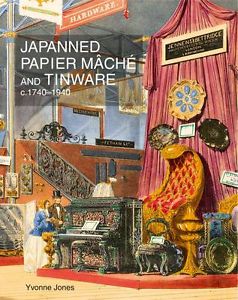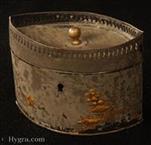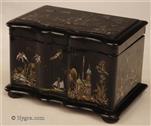
The book is an amazing resource to an almost undocumented story.
Yvonne Jones has so much knowledge.
You can order the
book from Amazon by clicking one of the links below:
Using these links helps to support this
website and is much appreciated.
I was reading this book while I was assembling:
%20(Custom).JPG)


 and and
 and
and and
and and... and...
|
from the dust-Jacket:
"This long overdue book strikingly re-casts papier mâché and
tinware as products of one industry -japanning and restores them to their
earlier position as highly regarded forms of decorative art, esteemed as
much by designers such as Robert Adam, as by fashionable society across
Europe and beyond... "
Publishers note:
"As one of the few decorative arts about which little has
been written, japanning is today fraught with misunderstandings.
And yet, in its heyday, the japanning industry attracted important
commissions from prestigious designers such as Robert Adam, and
orders from fashionable society across Europe and beyond. This
book is a long overdue history of the industry which centred on
three towns in the English midlands: Birmingham, Wolverhampton and
Bilston. It is as much about the workers, their skills, and the
factories and workshops in which they laboured, as it is about the
goods they made. It tells of matters of taste and criticism, and
of how an industry which continued to rely so heavily upon hand
labour in the machine age reached its natural end in the 1880s
with a few factories lingering into the late 1930s. Richly
illustrated, it includes photographs of mostly marked, or
well-documented, examples of japanned tin and papier mâché
against which readers may compare - and perhaps identify -
unmarked specimens. 'Japanned Papier Mâché and Tinware' draws
predominantly upon contemporary sources: printed, manuscript and
typescript documents, and, for the period leading up to the
closure of the last factories in the 1930s, the author was able to
draw on verbal accounts of eyewitnesses. With a chapter on
japanners in London, other European centres, and in the United
States, together with a directory of japan artists and decorators,
this closely researched and comprehensive book is the reference
work for collectors, dealers and enthusiasts alike."
|
